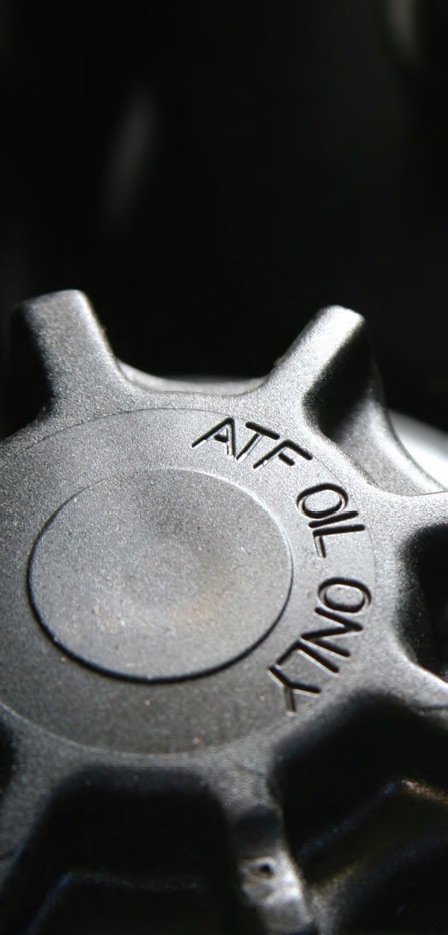
Executive Summary
Many believe automatic transmission fluids (ATFs) in electric vehicle gearboxes will cause some issues while few believe things will go well. As an example, one reader thinks changes in torque requirements will require a change in ATF formulations. Also, most respondents think ATFs won’t work well in electric gearboxes as the lubricants age, and as electric motor speeds and power densities increase. One reader said, “When developing electric vehicle gearboxes, differences from automatic transmissions should be considered. If operational temperatures, torques, loads, velocities, alloys, air/humidity entrainment and other parameters in electric gearboxes are very different from those in automatic transmissions, the impact of the lubricant must be addressed.”
Q.1 Automatic transmission fluids (ATFs) currently are used as the “fill-for-life” lubricant in electric vehicle gearboxes. What do you envisage being the possible issues or concerns with these lubricants, developed for automatic transmissions, being used in electric gearboxes?
Potential negative issues with materials of construction.
Higher torque from the electric motor.
I don’t believe there will be any issues provided the seals are sound and the timing is accurate.
As the fluid ages, the electrical properties will change and might affect the insulation effect provided in the wet gap of the motor.
They become self-aware and realize their life is confined to a small box. They will escape at some point, and then judgement day.
Different rotational speeds and torque curves will require adapted formulations. Shear rates might differ, affecting any viscosity index improver content. Start-up temperature will be similar, but what about the running temperature?
Much depends on the engineered useful life of the components and the vehicle into which they are installed. These lubricants, once installed, will be out of sight and mind and will be expected to outperform expectations in lonely exile. If they do not perform as expected, the replacement process will be a challenge. Standard ATF might adequately serve wear profiles service demands. I suspect this is a convenience issue more than the best lubricant for the application issue.
Application environment, such as temperature, contact surface, etc., is different. Heat transfer is an issue.
Do you believe ATFs will work as well in electric gearboxes as the lubricants age in these components/environments?
Yes
42%
No
58%
Based on responses sent to 15,000 TLT readers.
Changes in torque requirements will require a change in ATF formulations. Expect several grades to emerge.
Define “fill for life” in the application as the “life” of the gearbox might be less than the car life.
Oxidative stability.
What will the OEM specifications be?
Are the viscosity and wear characteristics the same for “fill-for-life” lubricants in electric vehicle gearboxes? How prone to water entering into the gearboxes are the “fill-for-life” gearboxes? If there is any possibility of water entering these, what formula adjustments are needed to prevent hydrolytic (or other chemical) breakdown and rust protection?
ATF is not designed for some of the performance parameters of electric vehicle gearboxes.
Life of fluid with regards to oxidation stability and climate (humidity, workload).
Different operating temperature range, the necessity of adding more efficient extreme pressure (EP) into a base oil, the necessity to increase the ability of lubricating to damping noises, possible problems with resistance to possible micro-sparking, problems related to churning of gear oil proportional to rotational speed.
Technology is different and the data set is not large enough to provide useful outcomes for “fill for life.”
For wet e-axle designs, a standard ATF fluid contains sulfur carrier EP agents that can corrode copper wiring if the coating is compromised.
I think it will go well.
I believe there are currently six different ATFs in common usage. It seems to me that “ATF” is actually a generic term used for lubricants used in transportation vehicle gearboxes. Will one of the current ATFs work? Probably fairly well. Can they be improved? Definitely.
Cooling function will drive toward lower viscosity fluids, thus thinner protective lubricant films.
Materials compatibility, oxidation, thermal and electrical conductivity, aeration, resistance to copper corrosion.
There are nearly 100 active transmission fluid specifications in the market. They vary in viscosity, frictional properties and load-carrying properties. Cooling, no radiator system to connect with, local hot spots, different wear patterns, motor rpm range effects.
ATFs, in general, are heavily additized with a focus on friction modifiers to achieve the correct blend to work with specific friction materials in specific makes and models of transmissions. I’m not sure this is required in electric vehicle gearboxes. Do they generally contain friction materials or just gears and bearings?
They might be OK, time will tell. But my opinion is that a PAG lubricant would be a better choice in a “fill-for-life” gearbox.
ATFs are not designed to be gear oils. ATFs are essentially hydraulic oils with heat transfer fluid characteristics. I would expect accelerated gear wear and gear failure due to the inadequate EP characteristics of ATFs.
Not in all electric vehicles.
Heat, conductivity, providing optimum wear protection for gears, frictional characteristics and possible incompatibility with components.
By the looks of the automotive-type valve bodies and filters I have seen, either electric vehicles do not carry the same definition of “service life” as ICE vehicles, or they rely on different metrics for mechanical/thermal losses and efficiency. My main concern would be the larger thermal release rates and lower thermal inertia of such cooling/lubricating systems, as well as the shortened service life caused by wear particle accumulation. Traditional ATFs, unlike engine oils, have not been charged with the duty of metal-to-metal film pressure, but mostly with heat management/clearance preservation. I am afraid that gear profiles would have to be modified, bearing this in mind. Or that the system would have to become heavier and more complex to include either or both a centrifuge filtration and larger fluid mass.
Do you believe ATFs will work as well in electric gearboxes as electric motor speeds increase?
Yes
40%
No
60%
Based on responses sent to 15,000 TLT readers.
When developing electric vehicle gearboxes, differences from automatic transmissions should be considered. If operational temperatures, torques, loads, velocities, alloys, air/humidity entrainment and other parameters in electric gearboxes are very different from those in automatic transmissions, the impact of the lubricant must be addressed.
Need to have a way to drain for regular maintenance—deposit, evaporation loss.
These ATF fluids were not optimized designs for electric vehicles gearboxes; they are just adequate in required performance levels. New fluids would be needed to provide “optimized” improvements in areas such as (1.) higher temperature resistance, (2.) improved thermal conductivity, (3.) improved oxidation stability, (4.) better electrical resistivity, (5.) copper corrosion and (6.) material compatibility (laminates, insulators, etc.).
So far fine, there are no problems with ATFs in gearboxes.
Q.2 What additional opportunities do you see for product differentiation and refinement when specific electric gearbox lubricants are developed?
Each fluid manufacturer will have to tailor their lubricant toward specific OEM specifications.
Types of synthetic base fluids, which might provide better performance in these transmissions.
All will move to a “lube for life.”
Long-term thermal stability, anticoking/antivarnish additives, antifoaming tendency at very high speeds, the EP properties at near-zero surface speeds.
I see two scenarios: standardized OEM products and wide-open performance claims met by the specialty lubricants industry. I think the first option makes the most sense.
Polymers, especially hybrid polymers, will be applied a lot.
“Fill for life” will enable/require the greater use of synthetic base oils.
Protection and environmentally friendly.
As ATFs are formulated with special additives, designing against the failure modes of lubricants in the gearboxes is the biggest differentiator.
If there are gearboxes, then there’s the existence of lubricants.
Is there a “one-product-fits-all” requirement? Do product characteristics vary by amperage (i.e., large vehicles versus smaller ones)?
Introduction of classification for gear oils relative to their ability of damping of noises and micro-sparking.
Developing driveline fluids that also provide high levels of cooling performance.
I think thermal stability and additive depletion is the key.
Improvement in gearbox efficiency.
Retention of fresh-fluid viscometrics, low-temperature properties over fluid’s service life, length of time of copper protection.
It would be more efficient and technically sound to develop a first intent fluid for electric vehicle gearboxes. I would suggest that a wet clutch-type tractor hydraulic fluid might be more appropriate.
Make it non-toxic, recyclable.
Using a fluid specifically designed to lubricate gears and bearings might be beneficial to keep the product simple, focused and possibly cheaper.
Do you believe ATFs will work as well in electric gearboxes as electric motor power densities increase?
Yes
28%
No
72%
Based on responses sent to 15,000 TLT readers.
Once the architecture of electric vehicles becomes accessible, we will see better lubricant application to specific electric vehicle gearbox needs. Currently, the electric vehicle manufacturers have supplied very little public access to their needs. Even the lubricant manufacturers are being closed-mouthed about their own products. It seems as though everyone thinks they are sitting on a huge trade secret when the needs of the electric vehicles might be relatively easily met. We need standards.

Fuel efficiency of fluid contribution, heat dissipation, thermal conductivity, wear performance, electrical component compatibility.
The opportunities for gearbox lubricants will come to those who are quick to learn how the new gearboxes are designed.
To me there is no differentiation. One lubricant for both transmissions and gearboxes. That is, an oil-based lubricant is required. ATF is usually formulated with ethylene glycol. In addition, power steering will use the same oil, I am certain.
Lower viscosity fluids for better efficiency. Use of more synthetic and novel base oils.
More focus on friction and wear.